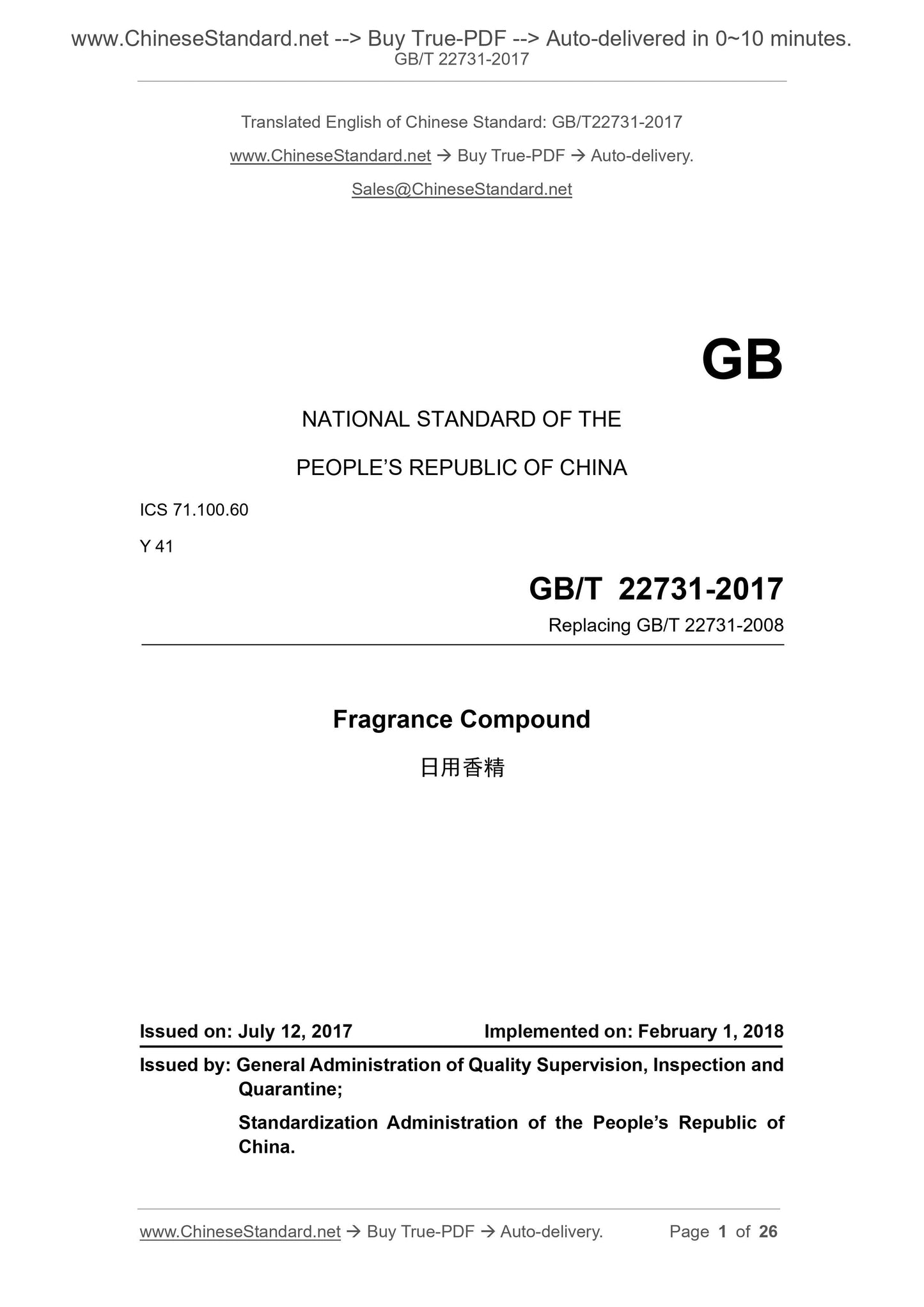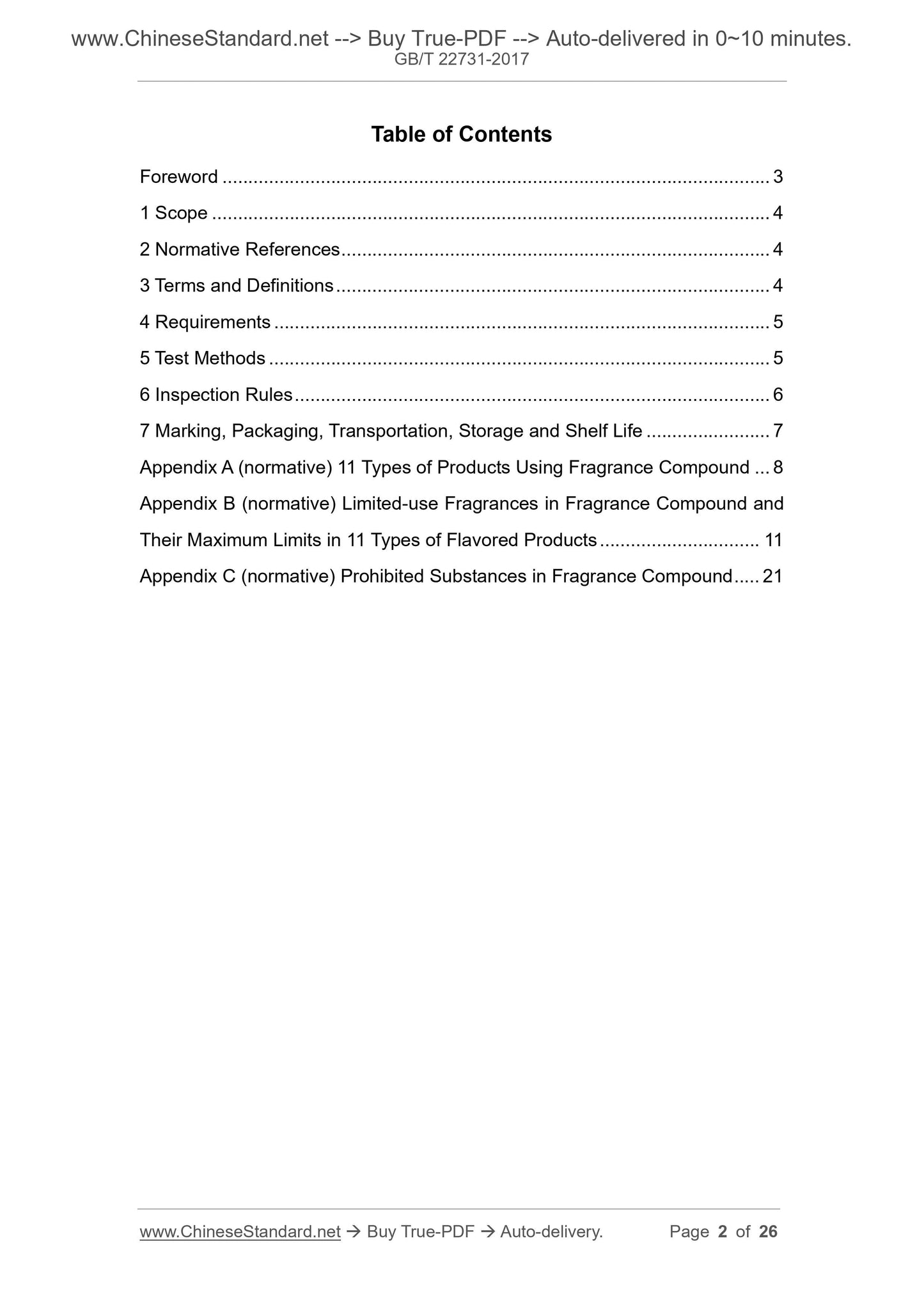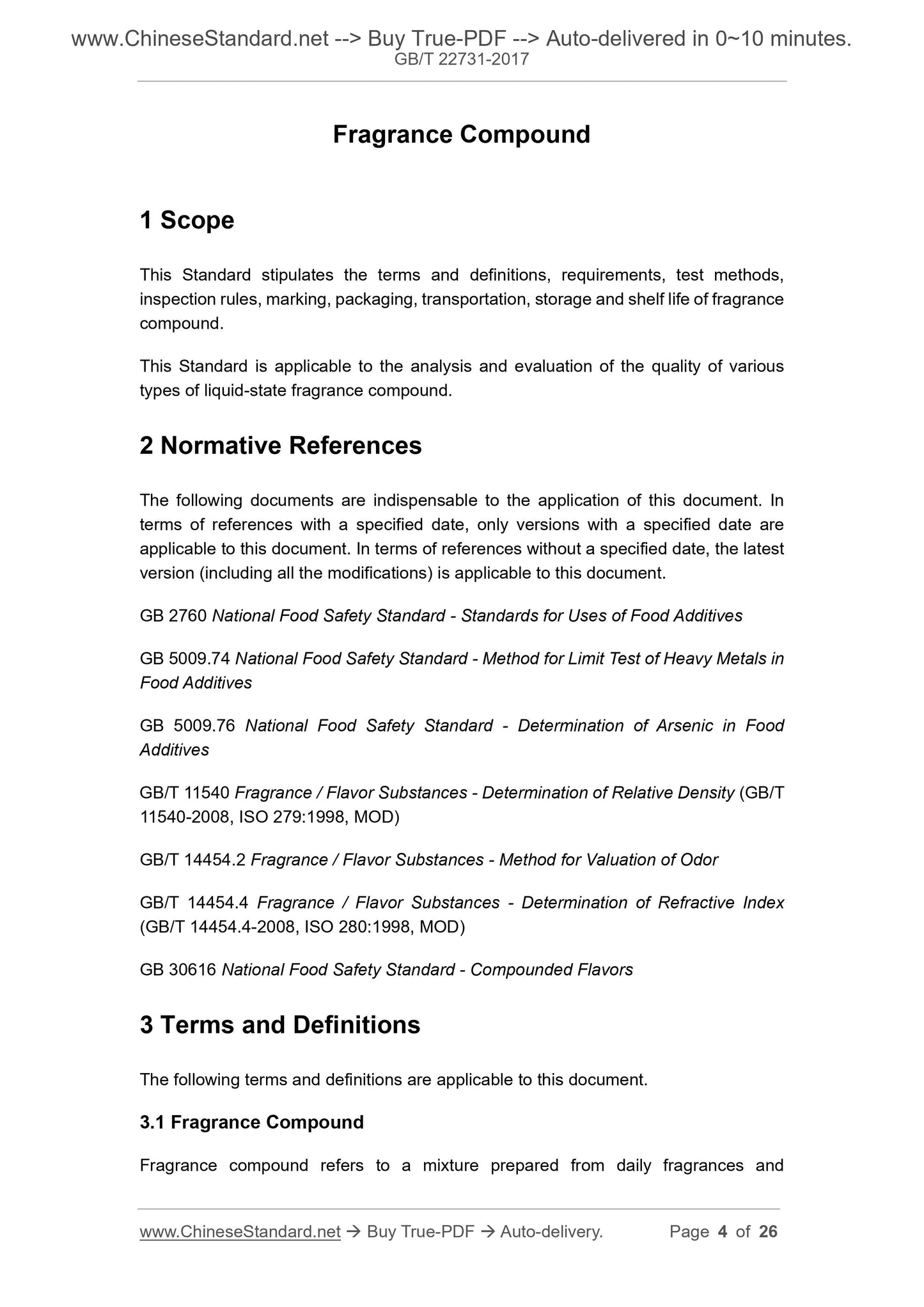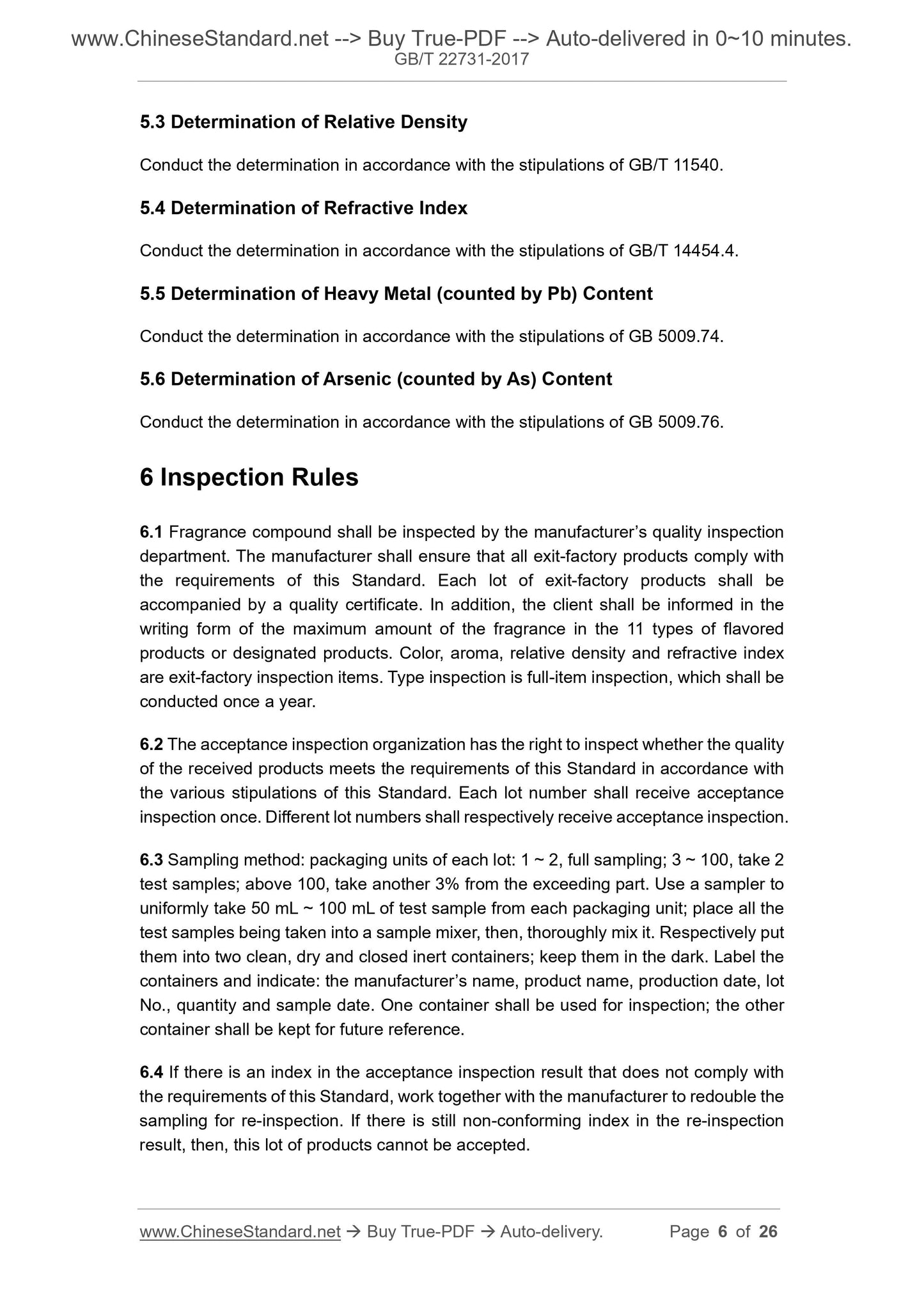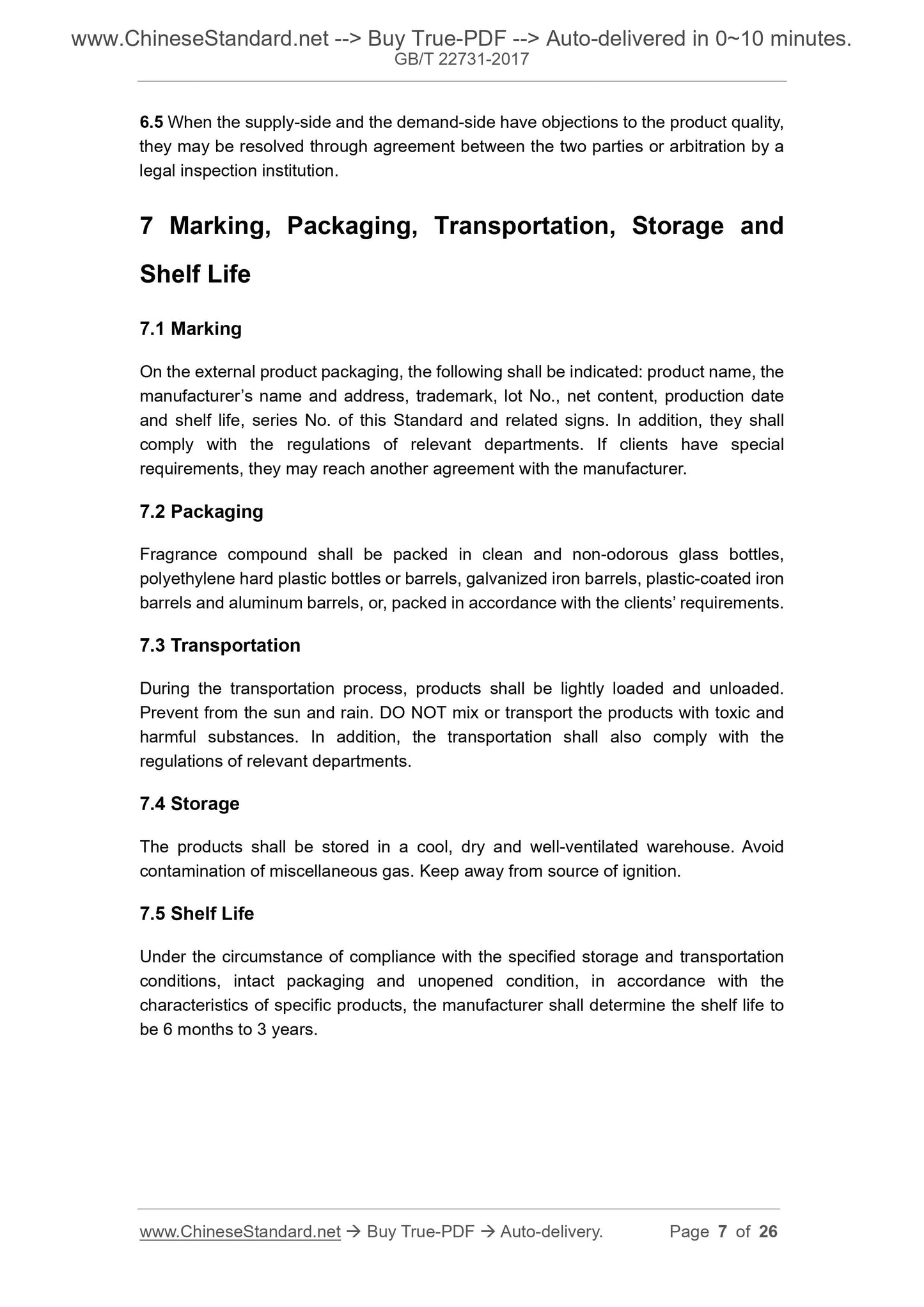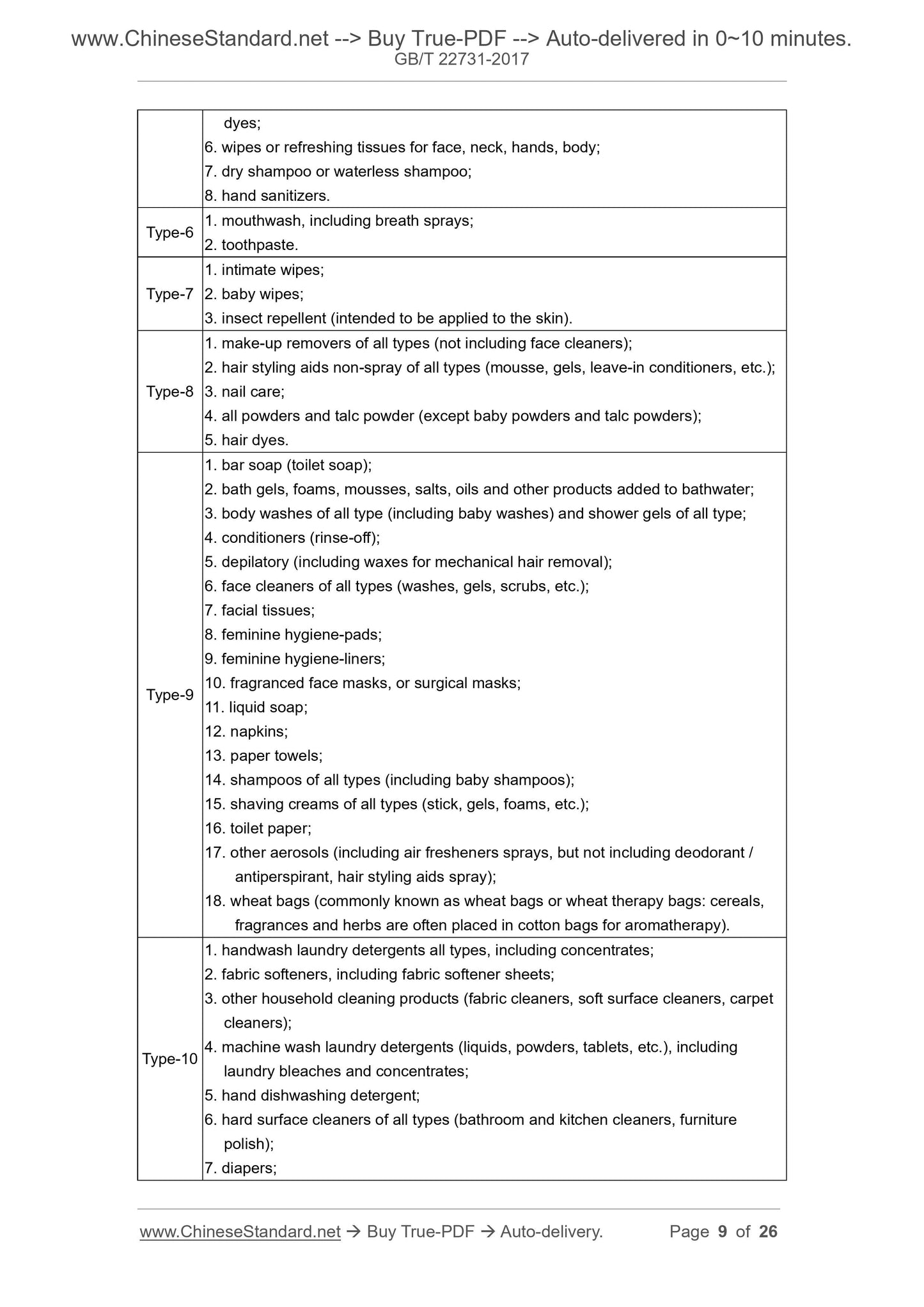1
/
of
6
PayPal, credit cards. Download editable-PDF and invoice in 1 second!
GB/T 22731-2017 English PDF (GB/T22731-2017)
GB/T 22731-2017 English PDF (GB/T22731-2017)
Regular price
$225.00
Regular price
Sale price
$225.00
Unit price
/
per
Shipping calculated at checkout.
Couldn't load pickup availability
GB/T 22731-2017: Fragrance Compound
Delivery: 9 seconds. Download (and Email) true-PDF + Invoice.Get Quotation: Click GB/T 22731-2017 (Self-service in 1-minute)
Newer / historical versions: GB/T 22731-2017
Preview True-PDF
Scope
This Standard stipulates the terms and definitions, requirements, test methods,inspection rules, marking, packaging, transportation, storage and shelf life of fragrance
compound.
This Standard is applicable to the analysis and evaluation of the quality of various
types of liquid-state fragrance compound.
Basic Data
| Standard ID | GB/T 22731-2017 (GB/T22731-2017) |
| Description (Translated English) | Fragrance Compound |
| Sector / Industry | National Standard (Recommended) |
| Classification of Chinese Standard | Y41 |
| Classification of International Standard | 71.100.60 |
| Word Count Estimation | 21,258 |
| Date of Issue | 2017-07-12 |
| Date of Implementation | 2018-02-01 |
| Older Standard (superseded by this standard) | GB/T 22731-2008 |
| Quoted Standard | GB 2760; GB 5009.74; GB 5009.76; GB/T 11540; GB/T 14454.2; GB/T 14454.4; GB 30616 |
| Issuing agency(ies) | General Administration of Quality Supervision, Inspection and Quarantine of the People's Republic of China, Standardization Administration of the People's Republic of China |
| Summary | This standard specifies the terms and definitions of daily flavor, requirements, test methods, inspection rules and signs, packaging, transportation, storage and shelf life. This standard is applicable to the analysis and evaluation of the quality of various types of liquid daily flavor. |
Share
